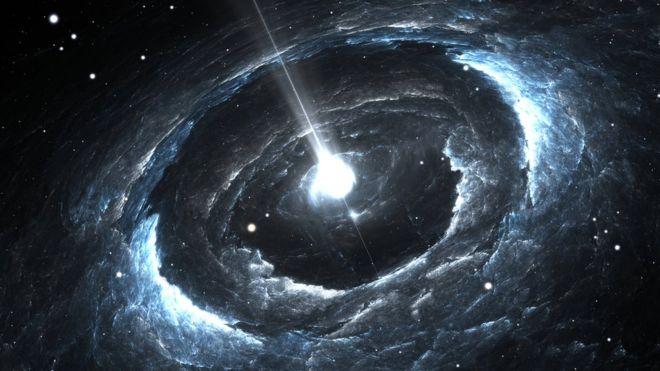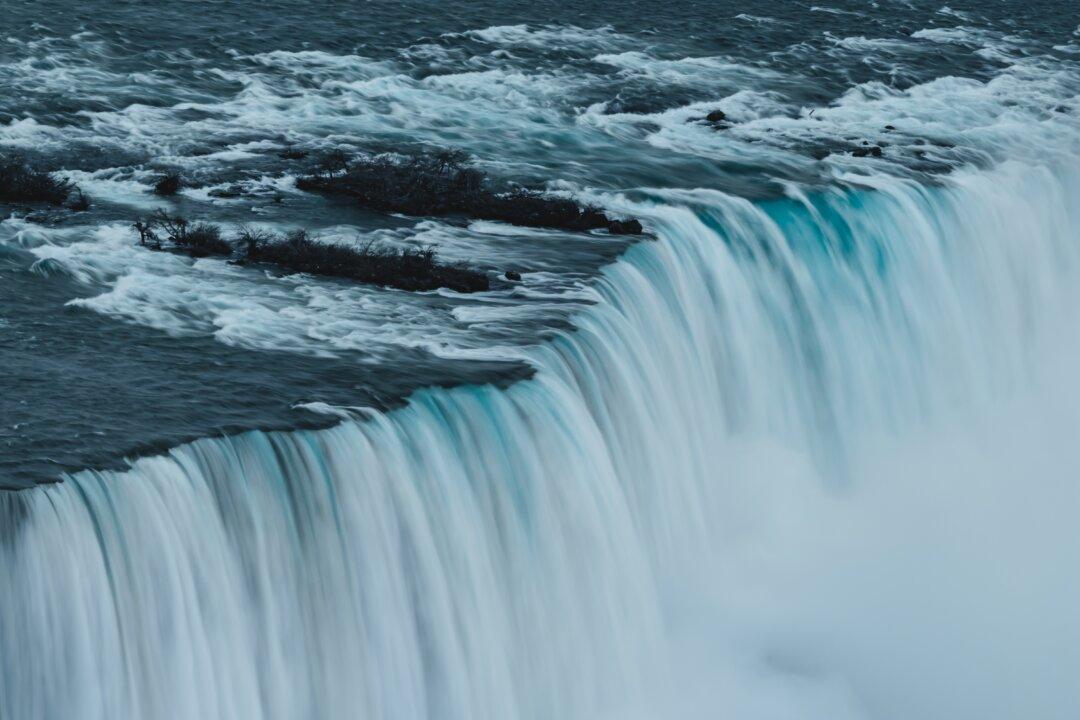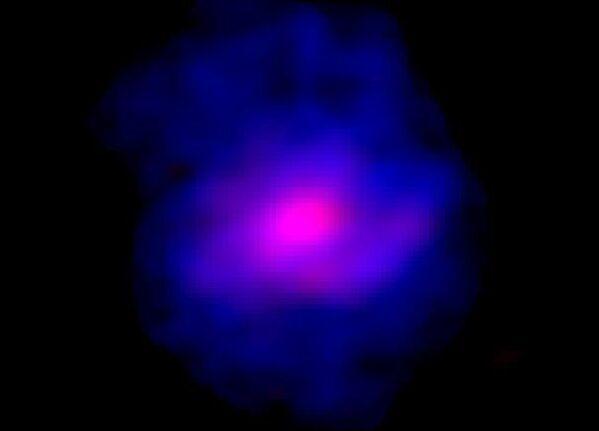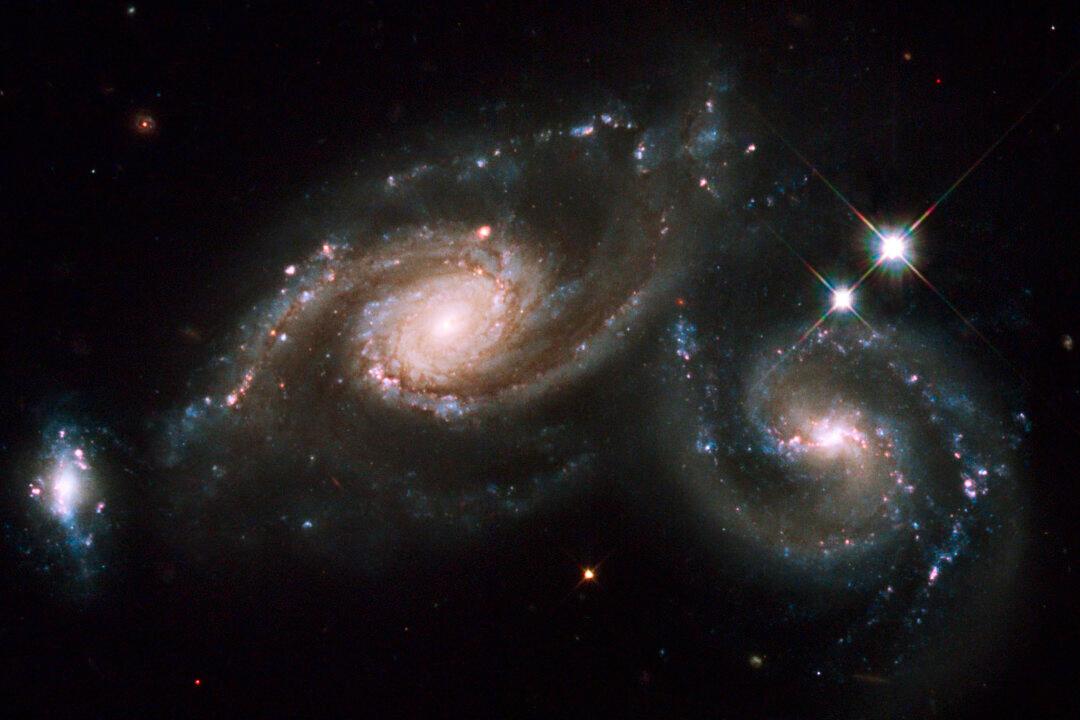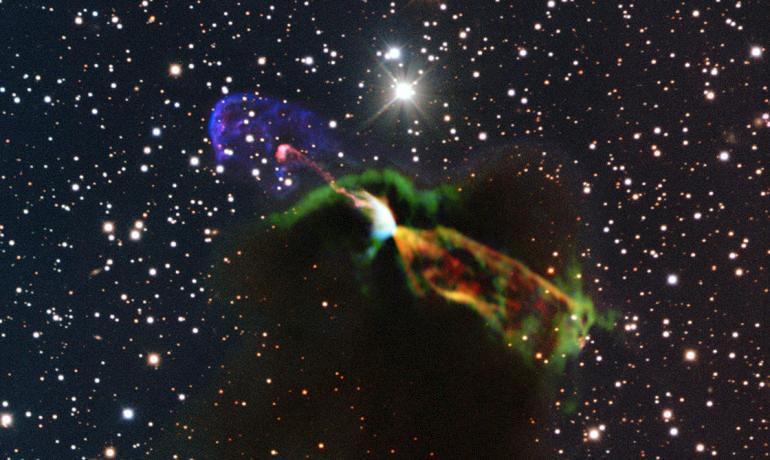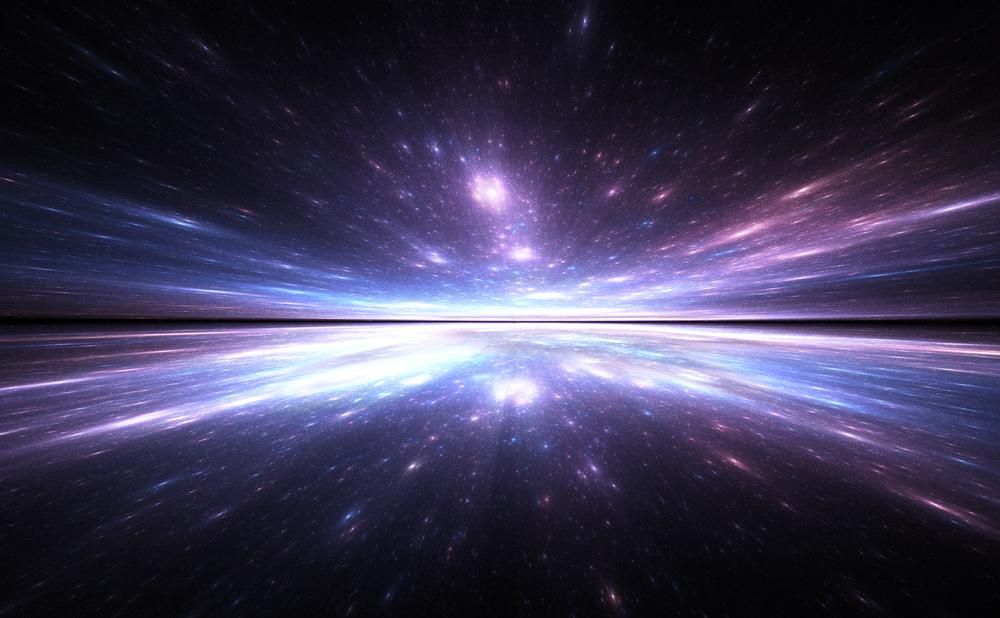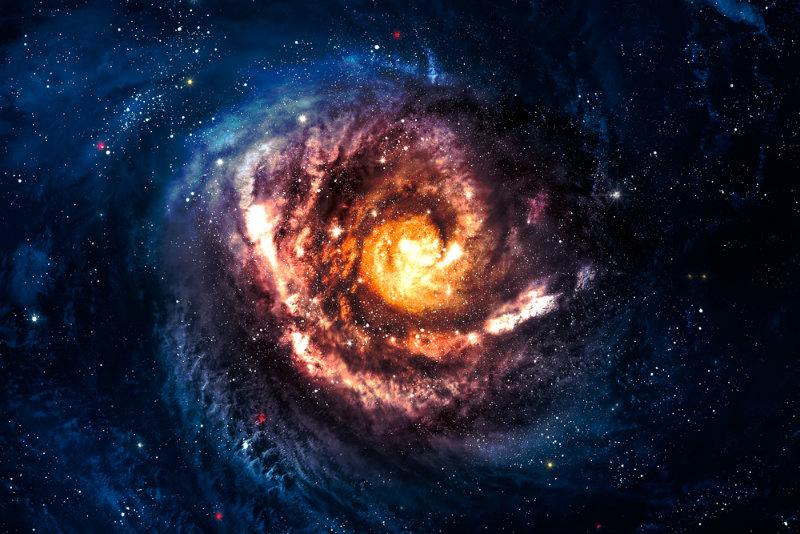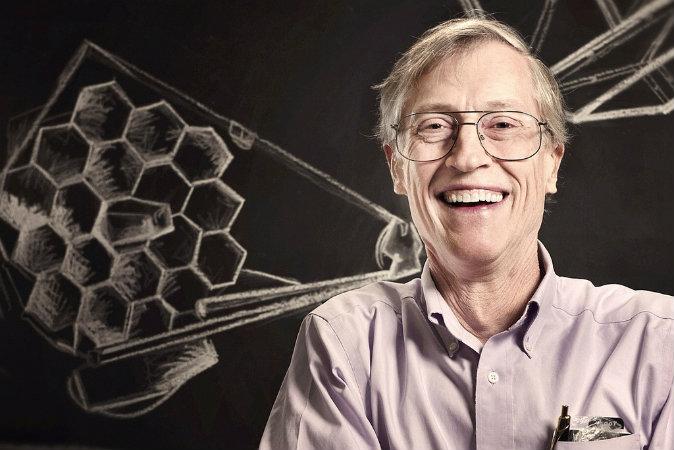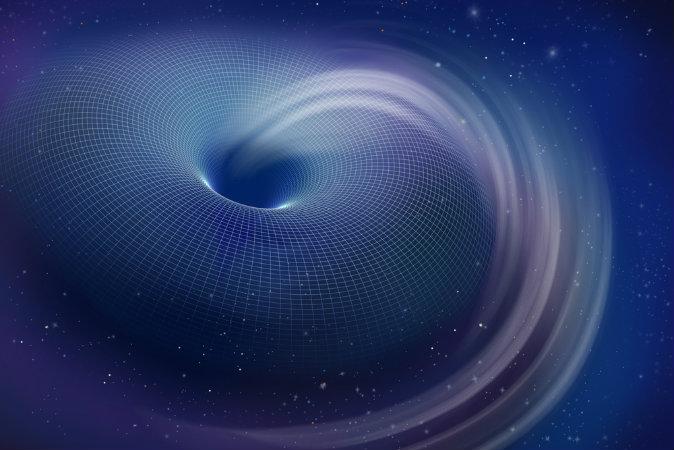Focus
Big Bang
Universe Expanding Faster Than Expected
The universe is expanding 9 percent more quickly than expected, telling us there’s something we’re missing. Could it be a new type of particle?
|
Hubble Telescope Sees 13.4 Billion Years Into Past, Breaks Record
The Hubble Space Telescope has broke a new record, peering 13.4 billion years into the past to observe an infant galaxy that may have formed just 400 million years after the Big Bang.
|
Hopkins Telescope to Examine Origins of the Universe
A journey to the beginning of the universe lurched forward Monday with a trek over just a few hundred feet.
|
Early Universe Might Not Have Been So Chaotic
Large disk galaxies, much like our own Milky Way, may have existed in the early days of the universe.
|
‘Smoking Gun’ Proto-Galaxy Hints at Early Universe
Astronomers have discovered a giant swirling disk of gas 10 billion light-years away—a galaxy-in-the-making that is actively being fed cool primordial gas tracing back to the Big Bang.
|
Prominent Scientist Says Consciousness Is Key to a ‘Theory of Everything’
Dr. Robert Lanza, one of Time magazine’s 100 most influential people, believes science must recognize the importance of human consciousness.
|
Astronomers See Dust That Formed Early Stars
For the first time scientists have observed the dust contents of galaxies as seen just 1 billion years after the Big Bang.
|
Traveling Faster Than the Speed of Light: Warp Drive Feasible?
Going faster than the speed of light is impossible, according to Albert Einstein’s Special Relativity Theory, yet theoretical physicists bend their minds to the task, wondering if there’s a way around the rules.
|
Why is Space Black? (Video)
Have you ever looked up in the night sky and wondered, “Why is space black?”
|
There Might Be a Mirror Universe Where Time Moves Backwards (Video)
From our perspective, time is always moving forward, but according to some theoretical research, it might be possible that the Big Bang also created a mirrored universe where time moves backwards relative to our own understanding.
|
Dr. Michio Kaku on Why the Multiverse Has 11 Dimensions
We believe, though we cannot yet prove, that our multiverse of universes is 11-dimensional. So think of this 11-dimensional arena and in this arena there are bubbles, bubbles that float and the skin of the bubble represents an entire universe, so we’re like flies trapped on fly paper.
|
Have Cosmologists Lost Their Minds in the Multiverse?
The recent BICEP2 observations – of swirls in the polarisation of the cosmic microwave background – have been proclaimed as many things, from evidence of the Big Bang and gravitational waves to something strange called the multiverse.
|
3 Alternatives to the Big Bang Theory
If the Big Bang theory is just a “theory,” are there other hypothetical explanations for the origin of the known universe?
|
|
What Exactly Are Black Holes and What Happens Inside Them?
Black holes could be portals to other universes; they may defy Einstein’s relativity theory or quantum mechanics; they may contain singularities, an ultra-complex substance. Here’s a look at what we think we might know about these deep mysteries.
|
Universe Expanding Faster Than Expected
The universe is expanding 9 percent more quickly than expected, telling us there’s something we’re missing. Could it be a new type of particle?
|
Hubble Telescope Sees 13.4 Billion Years Into Past, Breaks Record
The Hubble Space Telescope has broke a new record, peering 13.4 billion years into the past to observe an infant galaxy that may have formed just 400 million years after the Big Bang.
|
Hopkins Telescope to Examine Origins of the Universe
A journey to the beginning of the universe lurched forward Monday with a trek over just a few hundred feet.
|
Early Universe Might Not Have Been So Chaotic
Large disk galaxies, much like our own Milky Way, may have existed in the early days of the universe.
|
‘Smoking Gun’ Proto-Galaxy Hints at Early Universe
Astronomers have discovered a giant swirling disk of gas 10 billion light-years away—a galaxy-in-the-making that is actively being fed cool primordial gas tracing back to the Big Bang.
|
Prominent Scientist Says Consciousness Is Key to a ‘Theory of Everything’
Dr. Robert Lanza, one of Time magazine’s 100 most influential people, believes science must recognize the importance of human consciousness.
|
Astronomers See Dust That Formed Early Stars
For the first time scientists have observed the dust contents of galaxies as seen just 1 billion years after the Big Bang.
|
Traveling Faster Than the Speed of Light: Warp Drive Feasible?
Going faster than the speed of light is impossible, according to Albert Einstein’s Special Relativity Theory, yet theoretical physicists bend their minds to the task, wondering if there’s a way around the rules.
|
Why is Space Black? (Video)
Have you ever looked up in the night sky and wondered, “Why is space black?”
|
There Might Be a Mirror Universe Where Time Moves Backwards (Video)
From our perspective, time is always moving forward, but according to some theoretical research, it might be possible that the Big Bang also created a mirrored universe where time moves backwards relative to our own understanding.
|
Dr. Michio Kaku on Why the Multiverse Has 11 Dimensions
We believe, though we cannot yet prove, that our multiverse of universes is 11-dimensional. So think of this 11-dimensional arena and in this arena there are bubbles, bubbles that float and the skin of the bubble represents an entire universe, so we’re like flies trapped on fly paper.
|
Have Cosmologists Lost Their Minds in the Multiverse?
The recent BICEP2 observations – of swirls in the polarisation of the cosmic microwave background – have been proclaimed as many things, from evidence of the Big Bang and gravitational waves to something strange called the multiverse.
|
3 Alternatives to the Big Bang Theory
If the Big Bang theory is just a “theory,” are there other hypothetical explanations for the origin of the known universe?
|
|
What Exactly Are Black Holes and What Happens Inside Them?
Black holes could be portals to other universes; they may defy Einstein’s relativity theory or quantum mechanics; they may contain singularities, an ultra-complex substance. Here’s a look at what we think we might know about these deep mysteries.
|

